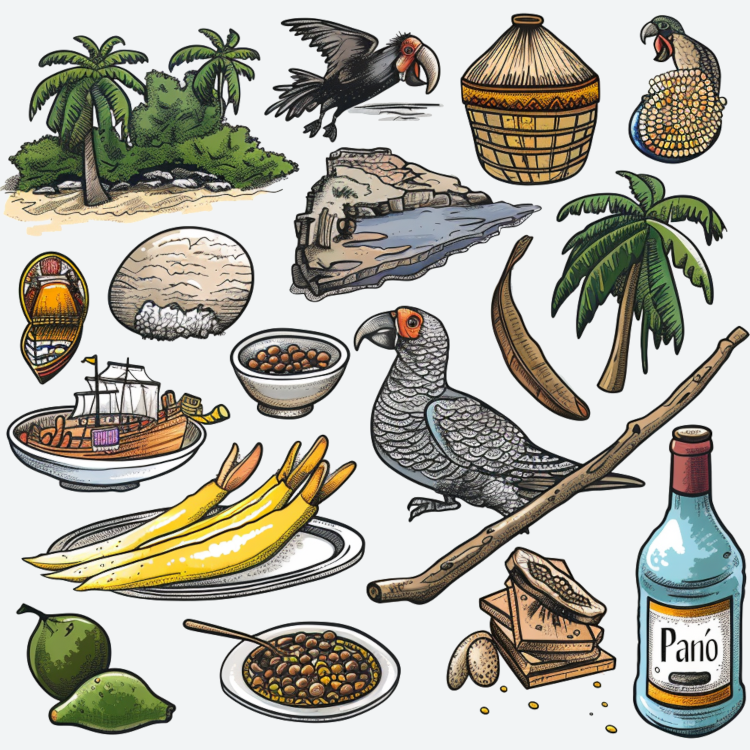About GW

Location
Guinea-Bissau is a country located on the west coast of Africa, bordered by Senegal to the north and Guinea to the south and east. It also has a coastline along the Atlantic Ocean to the west.
Capital
The capital city of Guinea-Bissau is Bissau, which is also the largest city in the country.
Population
As of the latest estimates, Guinea-Bissau has a population of approximately 2.0 million people.
Area
Guinea-Bissau covers a total land area of about 36,125 square kilometers (13,948 square miles).
Official Language
The official language of Guinea-Bissau is Portuguese, inherited from its colonial past.
Government
Guinea-Bissau is a republic with a semi-presidential system of government. The President of Guinea-Bissau is the head of state, while the Prime Minister is the head of government. The country has a multi-party political system.
Independence
Guinea-Bissau gained independence from Portugal on September 24, 1973, and declared independence on September 24, 1973.
Economy
Guinea-Bissau's economy is largely agrarian, with the majority of the population engaged in subsistence agriculture. Cashew nuts are the main export product, accounting for a significant portion of the country's export earnings. Fishing is also an important economic activity. However, the country faces challenges such as political instability, corruption, and inadequate infrastructure, which hinder economic development.
Culture
Guinea-Bissau has a diverse cultural heritage influenced by its ethnic diversity, which includes ethnic groups such as the Balanta, Fula, Mandinka, and Papel. Traditional music and dance are important aspects of the country's cultural identity, with styles such as gumbe and kussundé being popular. The country also has a rich tradition of oral literature and storytelling.
Natural Resources
Guinea-Bissau is endowed with natural resources, including fertile land, forests, and mineral deposits such as bauxite and phosphates. However, the exploitation of these resources has been limited due to political instability and lack of investment.
Challenges
Guinea-Bissau faces several challenges, including political instability, poverty, and underdevelopment. The country has experienced multiple coups and periods of political turmoil since gaining independence, which have hindered its development efforts. Additionally, Guinea-Bissau is vulnerable to environmental threats such as deforestation, soil erosion, and climate change.

National Items of Guinea-Bissau
Bolama Island
Bolama Island, part of the Bijagós Archipelago, is significant for its historical and cultural heritage. It symbolizes natural beauty, biodiversity, and the country's colonial history.
Bijagós Islands
The Bijagós Islands are a UNESCO Biosphere Reserve, symbolizing the rich biodiversity, natural beauty, and ecological significance of Guinea-Bissau.
Djemberém Dance
Djemberém is a traditional dance in Guinea-Bissau, often performed during ceremonies and festivals. It symbolizes cultural heritage, artistic expression, and social traditions.
Griots
Griots are traditional storytellers and musicians in Guinea-Bissau. They symbolize the rich oral tradition, cultural heritage, and historical preservation.
Palm Wine
Palm wine, a traditional beverage made from the sap of palm trees, symbolizes cultural heritage, traditional practices, and social traditions.
Pepper Soup (Caldo de Mancarra)
Pepper soup, also known as Caldo de Mancarra, is a traditional dish made with peanuts and fish or meat. It symbolizes the rich culinary heritage and the blend of various cultural influences.
Guinea-Bissau Traditional Dress
Traditional dress in Guinea-Bissau, including styles like the "Pano" for women, symbolizes cultural heritage, identity, and traditional fashion.
Rice Fields
Rice is a staple food and a significant agricultural product in Guinea-Bissau. It symbolizes sustenance, agricultural heritage, and the importance of farming in the country's economy.
Balanta Harp (Simbi)
The Balanta Harp, known as the Simbi, is a traditional musical instrument used by the Balanta people. It symbolizes the rich musical heritage and cultural identity.
Cantanhez Forest National Park
Cantanhez Forest National Park is a significant natural reserve, symbolizing the country's commitment to conservation, biodiversity, and natural beauty.
Mangrove Ecosystems
Mangrove ecosystems in Guinea-Bissau symbolize the country's rich biodiversity, ecological significance, and commitment to environmental conservation.
Cacheu River
The Cacheu River is an important waterway in Guinea-Bissau. It symbolizes natural resources, transportation routes, and the lifeblood of the country's ecosystems.
Traditional Fishing Boats
Traditional fishing boats, often seen along the coast, symbolize the maritime heritage, fishing traditions, and the importance of the sea to the local economy.
Kora
The Kora, a traditional stringed instrument, symbolizes the rich musical heritage and cultural traditions of Guinea-Bissau.
Cachupa
Cachupa, a traditional stew made from corn, beans, and meat or fish, symbolizes the rich culinary heritage and communal meals.
Bissau
Bissau, the capital city, symbolizes the political, cultural, and economic heart of the country.
African Grey Parrot
The African Grey Parrot, native to the forests of Guinea-Bissau, symbolizes the rich avian diversity and natural beauty of the country's ecosystems.

The anthem celebrates the unity, freedom, and aspirations for peace and progress in Guinea-Bissau.
The national anthem of Guinea-Bissau is called "Esta É a Nossa Pátria Bem Amada" in Portuguese, which translates to "This is Our Beloved Homeland" in English. Here are the lyrics in Portuguese along with the translation:
Esta é a nossa pátria bem amada,
Pátria imortal dos nossos antepassados!
Ritmo do trabalho é a tua imagem
O teu nome é a liberdade, oh pátria!
Nós vamos construir na pátria unida
A paz e o progresso, na terra.
This is our beloved homeland,
Immortal homeland of our ancestors!
The rhythm of work is your image,
Your name is freedom, oh homeland!
We will build a united homeland
Peace and progress on earth.


